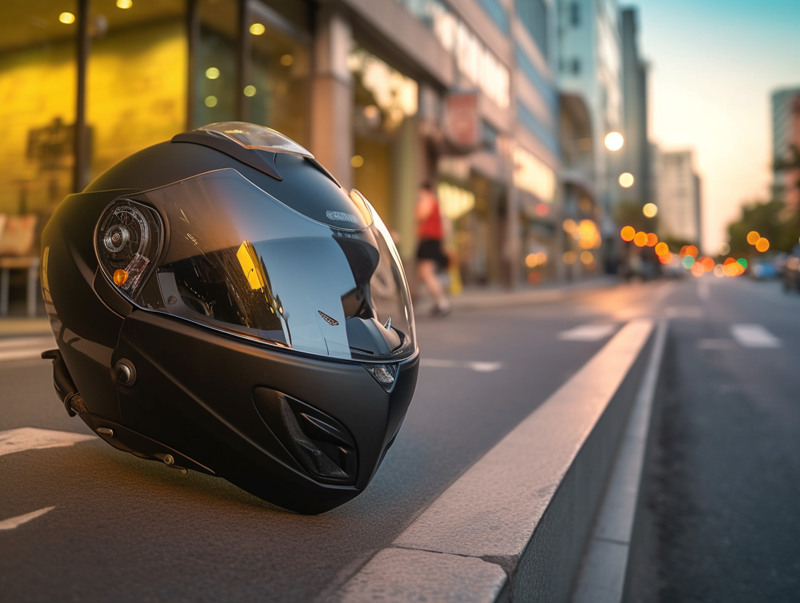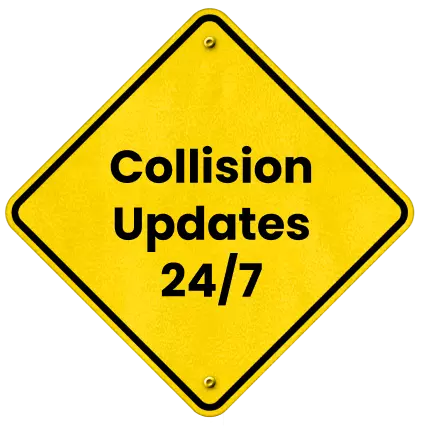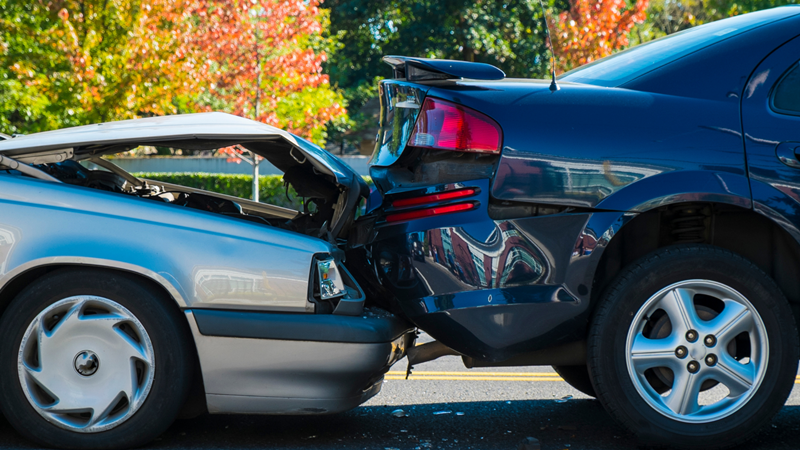
The Role of Visibility Gear in Reducing I-5 Motorcycle Crashes


Motorcycle riders face unique risks on Interstate 5 (I-5), where high speeds, dense traffic, and long stretches of open highway create conditions ripe for serious or fatal crashes. Limited visibility, particularly at night or in adverse weather, is one of the most significant contributors to motorcycle collisions. In fact, according to the National Highway Traffic Safety Administration (NHTSA), roughly 30% of fatal motorcycle accidents occur when another driver fails to see the rider in time to react.
For riders navigating on the I-5, especially those commuting through major metropolitan areas like Los Angeles, Portland, and Seattle, investing in proper visibility and protective gear can dramatically reduce crash risk.
Why Visibility Gear Matters on I-5
The long north-south span of I-5 exposes motorcyclists to a wide range of driving environments, from fog-shrouded sections in Northern California to bright desert glare in Southern Oregon. In such conditions, visibility gear isn’t just an accessory; it’s a life-saving tool. Retroreflective jackets, helmets with high-visibility patterns, and LED accent lighting help riders stand out in traffic. The more noticeable a motorcyclist is, the less likely a driver is to make a sudden lane change or left-turn maneuver into their path.
Research shows that riders wearing fluorescent or reflective clothing are 37% less likely to be involved in a crash. Even simple measures like reflective tape on helmets and saddlebags can make a critical difference, especially in high-speed corridors where reaction times are short.
Essential Safety Gear for I-5 Riders
Motorcyclists traveling along Interstate 5 encounter rapidly changing conditions that make protective gear a necessity, not an option. From heavy rainfall near Seattle to blinding sunlight through California’s Central Valley, every segment of I-5 presents different visibility challenges. Choosing the right safety gear can significantly improve both survival odds and comfort on long-distance rides.
In addition to helmets and jackets, modern motorcycle PPE (Personal Protective Equipment) integrates high-tech materials and smart design to minimize injury risks:
- Retroreflective and fluorescent jackets: The most effective jackets combine high-visibility colors like neon yellow or orange with reflective panels that illuminate under vehicle headlights. Many models now use moisture-wicking and abrasion-resistant materials for added protection during warm-weather rides.
- High-visibility helmets: A helmet is not only a legal requirement in most states but also one of the most effective visibility tools. Helmets with reflective stripes or bright colors such as white, silver, or neon green can be seen up to 200 feet farther than dark matte models in low light.
- Airbag vests and jackets: Riders on busy freeways like I-5 benefit from this emerging technology. Airbag vests deploy in milliseconds during a crash, absorbing force around the chest, ribs, and spine. Many systems are reusable and compatible with regular riding gear.
- LED accent lighting and adaptive headlights: These systems improve nighttime safety without blinding other motorists. Adaptive headlights adjust beam direction based on the lean angle of the bike, helping riders see around curves or in uneven terrain, an essential feature on winding stretches of I-5 in Oregon or Northern California.
- Protective pants and gloves: Reflective detailing on knee armor or glove edges increases lateral visibility while providing essential abrasion protection in a slide or impact.
Beyond crash prevention, high-visibility gear can influence legal and insurance outcomes. If a rider is involved in a collision, proof of compliance with Federal Motor Vehicle Safety Standards (FMVSS) and NHTSA safety recommendations strengthens claims that the motorcyclist exercised reasonable care.
Many riders document their safety gear through receipts, photos, and registration with manufacturers, evidence that can be invaluable when establishing fault or negotiating settlements with the insurance company.
Preventing Motorcycle Accidents on I-5: Best Practices for Riders
Even with advanced safety gear, preventing motorcycle accidents on I-5 requires vigilance, awareness, and defensive riding techniques. This interstate experiences heavy traffic from both commuters and long-haul truckers, making it one of the most challenging routes for motorcyclists.
Some of the best practices include:
- Maintain extended following distances: On I-5, sudden stops are common in construction zones or near major interchanges like Los Angeles or Portland. Leave at least a four-second gap between vehicles to allow safe reaction time.
- Use headlights and reflective gear day and night: Studies show that daytime running lights and high-visibility clothing reduce crash likelihood by nearly 25%. Even during daylight, reflective materials stand out against traffic.
- Be strategic about lane positioning: Ride where you’re most visible to drivers, typically in the left or right tire track rather than directly behind a vehicle’s center. Avoid blind spots near large trucks or buses.
- Avoid lane-splitting in low-visibility areas: Although legal in parts of California, lane-splitting on curves or during heavy fog increases collision risks. Exercise caution when traffic is erratic or merging.
- Stay alert for debris, wildlife, or uneven pavement: Sections of I-5 through rural areas often have loose gravel, fallen branches, or uneven asphalt from frequent repaving.
- Plan for weather shifts: The I-5 corridor crosses multiple climate zones, like snow and fog in the north, rain in Oregon, and desert heat in Southern California. Checking forecasts before riding helps avoid hazardous conditions.
- Inspect gear and lights regularly: Reflective panels fade over time, and headlight lenses can cloud or misalign. A five-minute pre-ride inspection can prevent serious accidents.
Proactive riders who implement these strategies not only reduce crash risk but also demonstrate responsible conduct if an accident claim arises.
Legal Considerations and Liability After an I-5 Motorcycle Accident
After a motorcycle crash on I-5, determining fault often depends on whether all parties took reasonable safety measures. Visibility can become a factor in legal proceedings if an at-fault driver argues that they couldn’t see the motorcyclist. In such cases, documentation of your safety gear, including photos or receipts showing compliance with federal safety standards, may help establish that the rider acted responsibly.
Victims may also reference Federal Motor Vehicle Safety Standards (FMVSS) and NHTSA motorcycle visibility research to demonstrate adherence to recognized safety practices. These standards underscore the importance of proper reflective materials, helmet labeling, and visibility-enhancing technologies in preventing crashes.
Insurance adjusters and investigators often review dashcam footage, police reports, and even helmet-cam videos to assess visibility conditions. Riders who use compliant gear and ride with proper lighting are in a stronger position to claim full compensation for injuries, property damage, and lost income.
After a Motorcycle Crash on I-5, Call an I-5 Accident Lawyer
When a motorcycle crash occurs despite all precautions, injured riders and their families deserve experienced legal representation. Determining fault in visibility-related accidents can be complex, often requiring review of safety gear, lighting conditions, and driver testimony. Consulting an experienced motorcycle accident lawyer can help victims preserve evidence, handle insurance disputes, and pursue compensation for medical costs and emotional trauma.
If you or a loved one were involved in a motorcycle crash on I-5, professional legal guidance can make all the difference. Understanding your rights and presenting strong evidence can significantly affect the outcome of your case.
Reach out today for a free consultation with a skilled I-5 accident attorney and let an experienced legal team help you navigate recovery and accountability after a serious accident.







